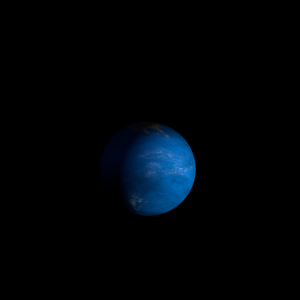|
|
Space Astro
|
Info for exoplanet "Noegaeon"
| Scientific (actual) data |
|---|
| Planet | Kepler-1269 b |
| Planet status | Confirmed |
| Radius | 0.145 |
| Orbital period | 37.3332 |
| Discovered | 2016 |
| Updated | 2021-02-05 |
| Tconj | 2455000 |
| Publication | Announced on a website |
| Detection type | Primary Transit |
| Alternate names | 2MASS J19111333+4520259 b, K02530.01, KIC 9011825 b, KOI-2530 b, KOI-2530.01, WISE J191113.33+452025.9 b |
| Star name | Kepler-1269 |
| Right ascension | 287.81° |
| Declination | 45.34° |
| Mag j | 12.498 |
| Mag h | 12.23 |
| Mag k | 12.218 |
| Star distance | 710 |
| Star metallicity | 0.07 |
| Star mass | 1.1 |
| Star radius | 1.15 |
| Star age | 3.55 |
| Star temperature | 5998 |
| Star alternate names | 2MASS J19111333+4520259, KIC 9011825, KOI-2530, WISE J191113.33+452025.9 |
| Wikipedia article | Kepler-1269 b |
Back
| |
| Fictional info (?) |
|---|
| Suggested name | Noegaeon |
| Planet type | Cold planet |
| It is the second-brightest natural object in the night sky after Eusteph-dus, reaching an apparent magnitude of -5 - bright enough to cast shadows at night and, often, visible to the naked eye in broad daylight. Orbiting within Eusteph-dus's orbit, Noegaeon is an inferior planet and never appears to venture far from Kepler-1269; its maximum angular distance from Kepler-1269 (elongation) is 72 degrees.
Noegaeon's atmosphere is similar to Eusteph-dus's in its primary composition of nitric oxide and hydrogen peroxide, but it contains more "ices" such as water, ammonia, and methane, along with traces of other hydrocarbons. It is named after the deity Noegaeon, the god of chaos.
The carbonyl sulfide has probably photodissociated, and the free nitric oxide has been swept into interplanetary space by the solar wind because of the lack of a formaldehyde layer. |
| Atmosphere | Nitric oxide | 50% |
| Hydrogen peroxide | 44% |
| Carbonyl sulfide | 5.2% |
| Formaldehyde | 0.18% |
| Carbon dioxide | 2.0E-6% |
| Atmospheric pressure | 80 bar |
 |
| No known satellites |
| Google search for Noegaeon |
|
Website by Joachim Michaelis
|
|
|
|